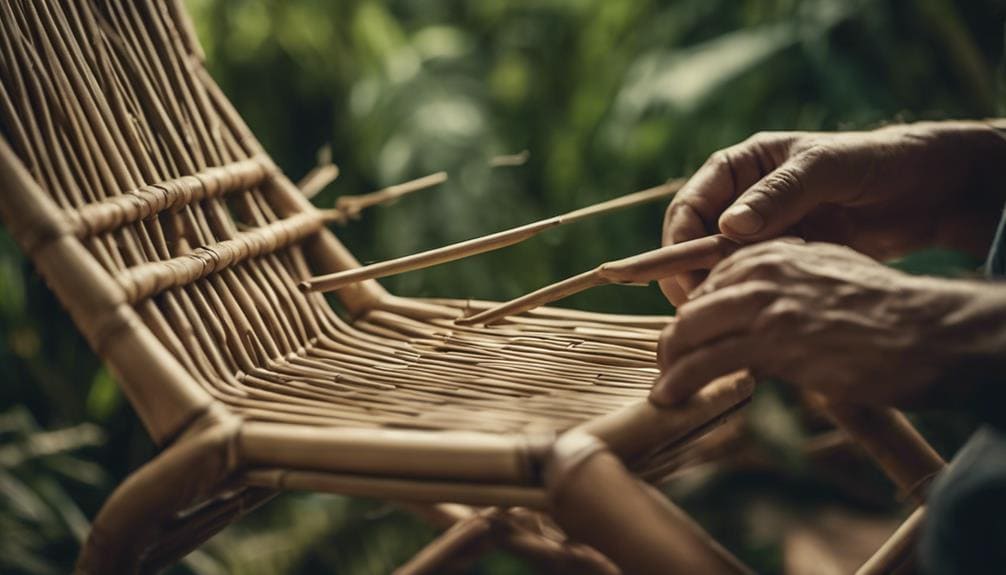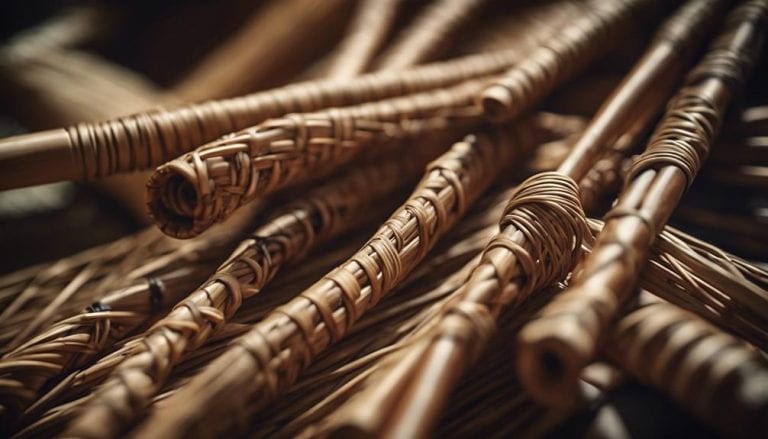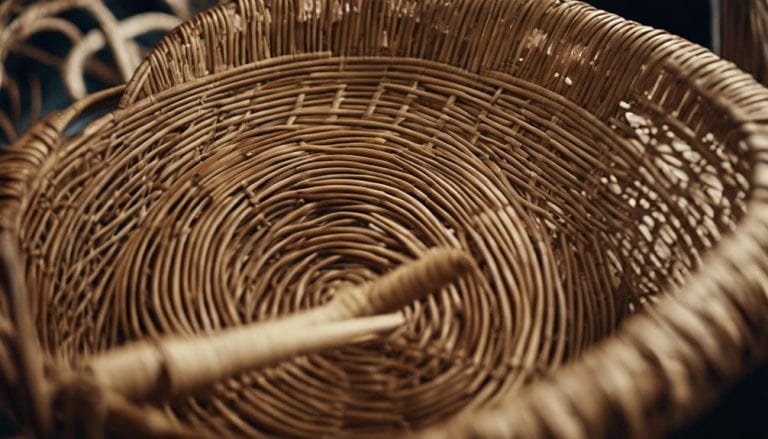Sustainable Rattan Cane for Weaving
Interestingly, over 70% of the world’s rattan supply comes from Indonesia, highlighting the country’s pivotal role in the sustainable rattan cane industry for weaving. As a professional writer interested in sustainable materials, I’ve explored how this natural resource supports local economies and aligns with eco-friendly practices.
However, the journey from vine to woven masterpiece involves intricate steps, each impacting the environment and communities. Let’s explore further how sustainable practices within this industry can contribute to a greener future without compromising the art and tradition of weaving.
Sustainable rattan cane is an eco-friendly choice for weaving projects. It offers durability and a natural aesthetic, and its renewable nature makes it a popular material for environmentally-conscious artisans.
Key Takeaways
- Rattan cultivation supports sustainable harvesting, minimizing chemical use, and promoting forest conservation.
- Mastery of weaving techniques allows for creative designs while minimizing waste.
- Choosing rattan fosters a circular economy, reducing carbon emissions and supporting waste reduction.
- Buying rattan products empowers local artisans, preserves traditional skills, and boosts local economies.
The Journey of Rattan
The journey of rattan from its wild, climbing origins in the dense forests of Indonesia to a sought-after material for eco-conscious weaving projects underscores its unique blend of sustainability and versatility. As I delve deeper into this narrative, it’s essential to highlight the technical aspects that make rattan an eco-friendly choice and a testament to the skills involved in its cultivation and the weaving process.
Although not the main focus here, rattan cultivation sets the stage for sustainable harvesting practices that ensure the material’s longevity and minimal environmental impact. This careful approach to gathering rattan ensures that the quality of the cane is preserved, making it ideal for crafting intricate patterns in basketry and furniture accents.
The weaving process is a remarkable demonstration of craftsmanship, requiring a deep understanding of the material’s properties and a commitment to eco-conscious production methods. This process transforms the flat rattan cane, a cost-effective and versatile material, into items with a rustic and natural charm. As an eco-focused individual, I find this aspect of rattan particularly compelling, showcasing a harmonious blend of traditional techniques and modern sustainability objectives.
Cultivation Practices

Having explored rattan’s journey and weaving intricacies, it’s crucial now to examine how its cultivation practices play a pivotal role in ensuring its sustainability and the preservation of natural ecosystems. Rattan growth is notably rapid, flourishing in the lush, diverse ecosystems of tropical regions like Indonesia and Southeast Asia. This vigorous growth and cultivation practices that shy away from chemical interventions underscores the ecological harmony rattan cultivation embodies.
- Minimal chemical use: Rattan’s natural resilience reduces the need for chemicals, fostering a healthier ecosystem.
- Rapid growth: The quick maturation of rattan plants, some reaching lengths of up to 200 meters within years, underscores the efficiency of its cultivation in promoting forest conservation.
- Economic and ecological synergy: Cultivating rattan bolsters local economies and preserves habitats, demonstrating a model for sustainable development.
These practices highlight the commitment to preserving the environment and enhancing the lives of local communities. Therefore, rattan cultivation’s ecological impact extends beyond mere growth rates or economic benefits; it’s about fostering a balance that ensures the longevity and health of our planet’s ecosystems.
Harvesting Techniques
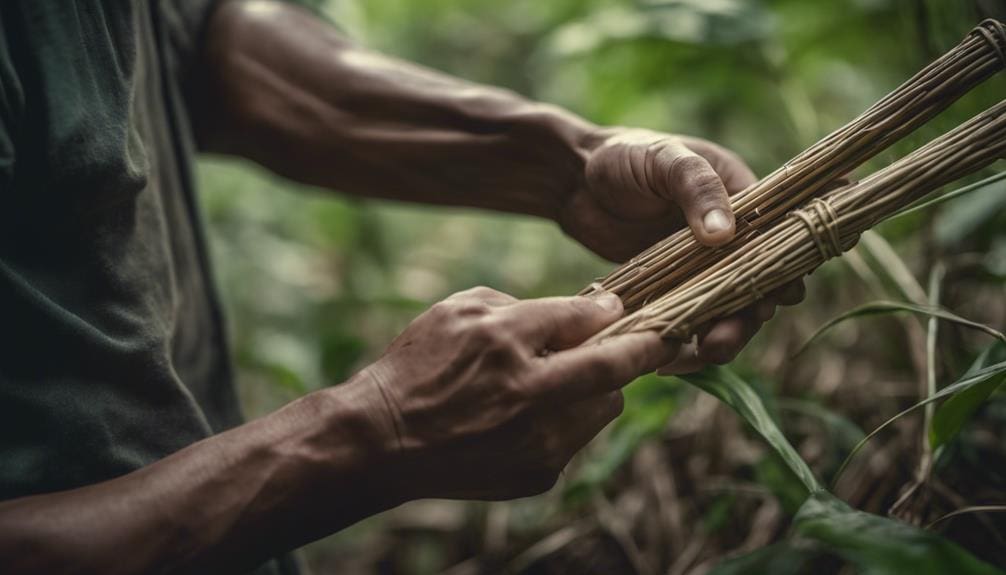
As we delve into the harvesting techniques of rattan cane, it’s imperative to acknowledge that sustainable practices are at the heart of minimizing environmental impact. Using traditional hand-cutting methods, skilled artisans in Indonesia showcase their expertise and commitment to forest conservation and regenerative agriculture. This approach ensures that we’re not just taking from the earth but also giving back, allowing the forests to thrive and maintain their ecological balance.
| Technique | Impact |
|---|---|
| Hand-cutting mature canes | Preserves forest structure |
| Selective harvesting | Supports biodiversity preservation |
| Allowing regeneration | Promotes ecological balance |
Preparing for Weaving

Before weaving, I ensure that the rattan cane is soaked in water briefly, enhancing its flexibility and easing the crafting process. This simple yet critical step makes the cane pliable and ideal for weaving intricate patterns and designs. The beauty of rattan lies in its lightweight durability, allowing for creative exploration without sacrificing strength. Its ease of cutting transforms custom shapes from mere ideas into tangible artistry, enticing me to explore beyond conventional boundaries.
- Weaving techniques: Mastery of various weaving techniques empowers me to weave products and stories, each twist and turn to hold a narrative of sustainable craftsmanship.
- Creative patterns: The flexibility of water-soaked rattan ignites my imagination, enabling the creation of custom shapes and patterns that reflect personal expression and eco-conscious living.
- Custom shapes: I precisely shape the rattan with scissors, a testament to the material’s versatility and my commitment to minimizing waste through thoughtful design.
This preparation stage is a meditative process, grounding me in sustainability principles while pushing the limits of creativity. It’s not just about making something beautiful; it’s about crafting with purpose, respect for the material, and a deep connection to the environment.
Environmental Benefits
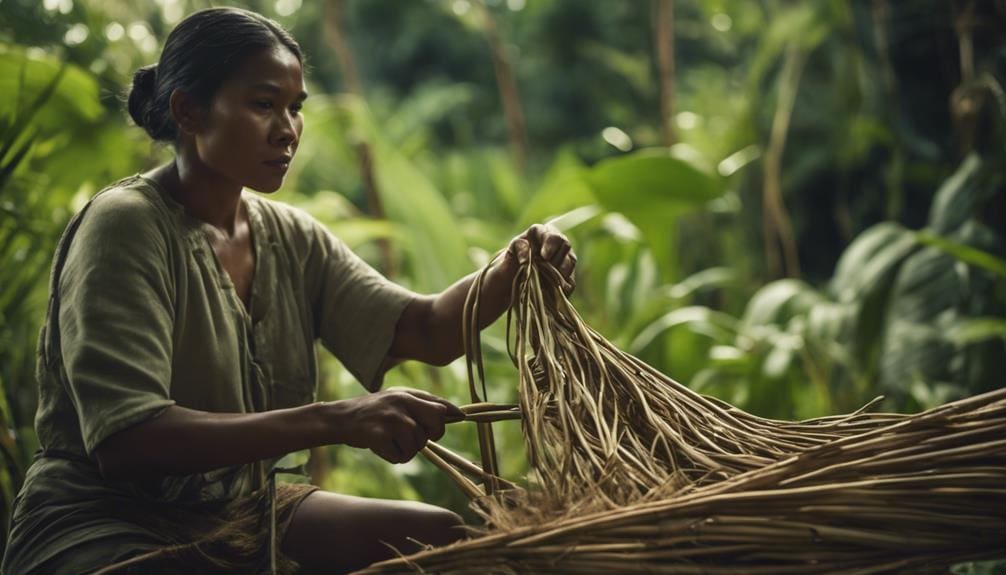
Rattan cane, a climbing vine, emerges as an eco-friendly powerhouse in weaving. Its natural, renewable qualities offer a sustainable alternative to synthetic materials. Its use in eco-friendly weaving minimizes our environmental footprint and champions a more sustainable, circular economy. As I delve into the ecological benefits of rattan cane, it’s clear that this material is not just another resource; it’s a testament to nature’s ability to provide eco-conscious solutions.
Opting for rattan cane in our weaving projects means supporting a compostable and recyclable material. This directly contributes to waste reduction efforts and circular economy integration, where materials are kept in use for as long as possible, extracting their maximum value before recovery and regeneration. The choice of rattan underscores a commitment to reducing landfill waste and minimizing our ecological impact.
Moreover, by choosing rattan cane, we’re actively promoting the preservation of forests and biodiversity. Its cultivation encourages forest growth and incentivizes communities to preserve natural habitats, aligning with broader environmental conservation goals. In essence, rattan cane represents a harmonious balance between human craftsmanship and ecological stewardship, embodying sustainability principles in every strand.
Supporting Local Artisans
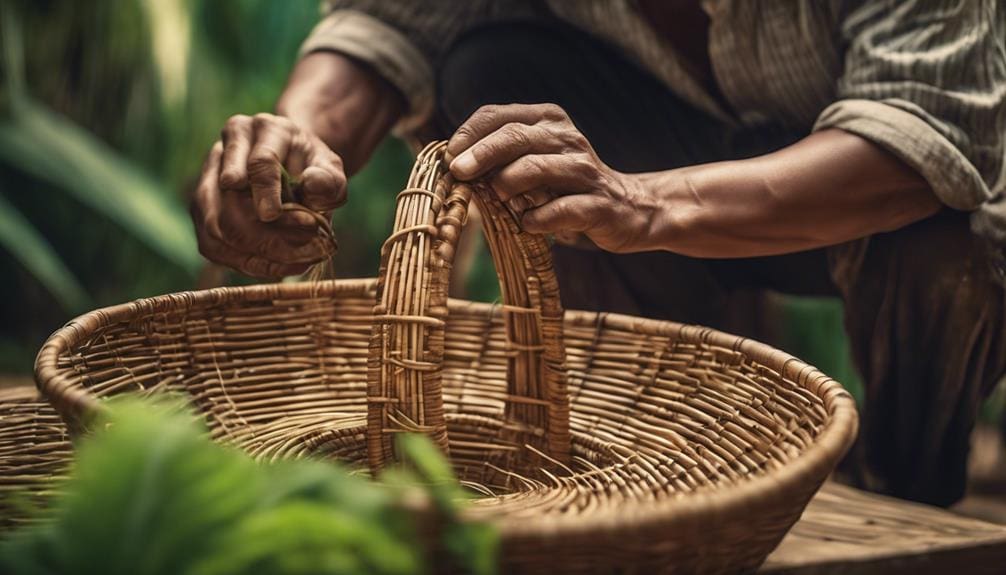
Beyond the environmental benefits, choosing rattan cane is crucial in supporting local artisans who handcraft these materials into beautiful, sustainable products. By purchasing directly from these craftsmen, I’m not just acquiring furniture or decor but investing in preserving traditional weaving techniques passed down through generations. Buying becomes a powerful tool for community empowerment and cultural preservation.
- Community Empowerment: Buying rattan cane products from local artisans directly supports their livelihoods, enabling them to sustain their families and contribute to the economic growth of their communities. It’s a tangible way to empower those who preserve these invaluable skills.
- Cultural Preservation: Each rattan piece tells a cultural heritage story, embodying centuries-old weaving techniques. Supporting local artisans helps ensure that this aspect of cultural identity isn’t lost to globalization.
- Sustainable Practices: Local artisans typically employ sustainable, environmentally friendly practices in their craft, minimizing waste and reducing the carbon footprint associated with transportation.
Supporting local artisans isn’t just an eco-conscious decision; it’s a commitment to nurturing the fabric of traditional craftsmanship and ensuring its survival for future generations.
Frequently Asked Questions
What Is the Difference Between Rattan and Cane Webbing?
Rattan and cane webbing differ in their processing. Rattan is thicker and often undergoes minimal treatment, while cane webbing is thinner and crafted through more intensive cane treatment for flexibility. Both have eco-merits, yet their applications vary greatly.
What Can I Use Instead of Cane Webbing?
I’ve discovered bamboo weave options and paper yarn alternatives as eco-friendly swaps for cane webbing. They’re not just sustainable; they add a unique, intimate touch to my furniture, blending tradition with eco-conscious innovation.
How Long to Soak Rattan Before Weaving?
I’ve found soaking rattan for 10-15 minutes in room-temperature water optimizes flexibility. It’s crucial for weaving, ensuring minimal breakage. Remember, the drying time post-soak affects its usability, maintaining the balance between flexibility and strength.
Which Is Stronger, Cane or Rattan?
I’ve noticed that when weaving a chair, rattan outperforms cane due to its superior durability and flexibility. Rattan’s strength and solid core make it the clear choice for projects needing resilience and longevity.
Conclusion
In weaving the threads of sustainable rattan cane, we’re not just crafting baskets but intertwining a narrative of environmental stewardship. Each strand symbolizes a commitment to eco-friendly practices, from mindful cultivation to meticulous harvesting. As we shape our creations, we also sculpt a future where sustainable materials reign, supporting the ecosystem and local artisans’ livelihoods. This journey of rattan isn’t merely about crafting objects but weaving a tapestry of ecological harmony and community resilience.

